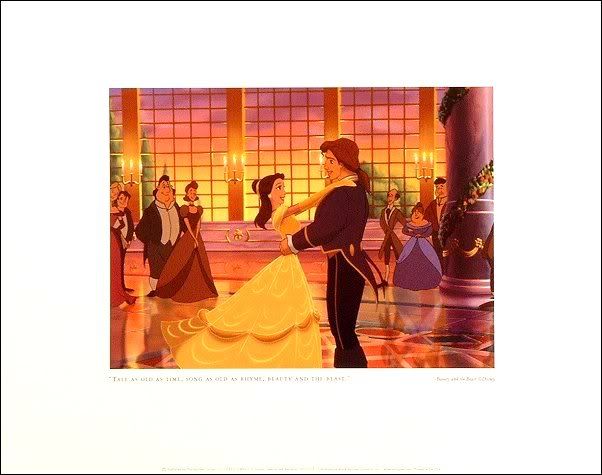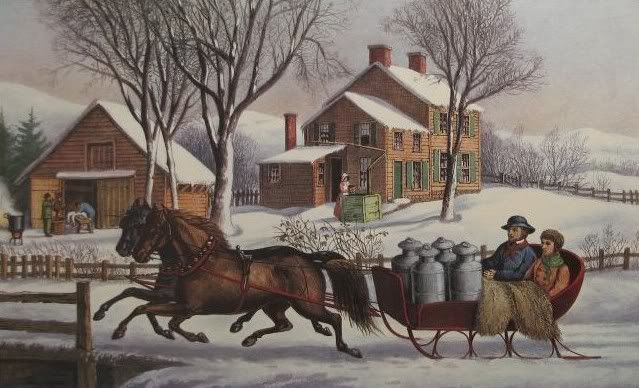Author's posts
Feb 12 2011
Original v. Cover — #65 in a Series
Today marks the final installment of a three-part mini-series exploring those ever vexing matters of the heart, as St. Valentine’s Day weekend looms before us. “You Don’t Know Me” told of love that might have been if the smitten one had expressed his/her intentions before it was too late. “Chances Are” seems far more encouraging, but stops short of making any serious commitments. This week’s selection speaks of love that has survived an arduous and perilous journey, inviting that benedictory, albeit grossly cliched refrain — “And they lived happily ever after.”
Those pierced by Cupid’s arrow for the first time often proceed with unbounded enthusiasm, undeterred by fear or doubt. Far more are all too acquainted with that unpleasant, but heavily trodden road that leads from rapt exhileration to crushing disappointment. To open oneself to experience true romance yet again represents a triumph of hope over fear, doubt and cynicism.
We all know those who try again and again, changing significant others more frequently than they do their vehicles. At one end of the spectrum is Glynn “Scotty” Wolfe, who during his 88 year life was married 29 times, leaving behind 28 ex-wives and 1 widow. And on the other is the unforgettable Miss Havisham, the long-suffering, grieving and jilted bride in the Charles Dickens’ classic, “Great Expectations.”
Feb 04 2011
Original v. Cover — #64 in a Series
This week’s selection was written by Robert Allen, with lyrics by Al Stillman and became a major hit in 1957. In fact, the song was listed on Billboard’s “Most Played By Jockeys” survey for the performer who has sold more than 350 million records during his lengthy and highly successful career. The song was also received the Grammy Hall of Fame award in 1998. The song first appeared on the Billboard Top 40 charts on September 16, 1957, remained on the charts for 22 weeks and peaked at #1. The “B”-side was one of three Top Ten hits in 1957, peaking at #9.
After last week’s somewhat gloomy leadup to St. Valentine’s Day, this song conveys a sense of cautious hope, suggesting to the recipient of the song that love is entirely possible, along with a reminder that matters of the heart, like life itself, always include an element of risk.
Jan 29 2011
Original v. Cover — #62 in a Series
Yet another St. Valentine’s Day will soon descend upon us. Those enchanted by fresh romance will agonize at length, wondering how best to make that day special. Some have spent many years with their beloved, appreciative of the predictability that has replaced the uncertain excitement of days long past. Properly remembering others on that day may derive from desire, a sense of obligation or a confusing combination of the two.
St. Valentine’s Day can also be a gloomy time of year. Thoughts may turn to long ago love affairs, of intoxicating hopes that eventually gave way to bitter disappointment. Yet other musings may drift toward the long hoped-for relationship of a lifetime, that almost happened but didn’t.
The sense of lost opportunity may be the cruelest vexation of all. That potential love interest may have entered our life two weeks or a month before both are to depart for opposite corners of the country. Maybe you met that someone at a particularly difficult time of your life, when you were preoccupied with one of the many crises that life casts upon us, and once the dust settled, that person was gone. Perhaps the most maddening frustrations occur when matters of romance are determined by misleading or incomplete information.
Jan 22 2011
Original v. Cover — #61 in a Series
This week’s selection was written in 1967 by the song’s producers, Isaac Hayes and David Porter, and performed by the most successful soul duo in history. The song was inspired by the turbulence of the Civil Rights movement of the 1960s, and more particularly, after Hayes observed the news coverage of the July 1967 12th Street Riot in Detroit. He noted that the locations spared in the riots were primarily African-American owned and operated businesses. The word “Soul” was prominently displayed on the exteriors of those buildings and recalled the Biblical story of the Passover.
This song was the most successful release yet for the Memphis-based Stax label, peaking at #1 on the Billboard Hot Black Singles chart and topping out at #2 on the Billboard Hot 100 in the United States in the autumn of 1967. The single reached the coveted #1 spot on the Cashbox charts on November 11, 1967. The recording duo was awarded the 1968 Grammy Award for Best Rhythm & Blues Group performance, Vocal or Instrumental.
Jan 15 2011
Original v. Cover — #60 in a Series
Tomorrow could have been the Rev. Martin Luther King Jr.’s 82nd birthday, had an assassin’s bullet not so cruelly silenced his voice. At a turbulent time when this nation could have easily descended into the flames of a second Civil War, King’s leadership charged his followers, righteously angry and understandably desiring revenge, to adopt a far more measured and difficult course — a course that may well have been the only path leading to the significant, albeit incomplete, civil rights legislation of the mid-1960s.
Borrowing from the teachings of Jesus in the New Testament and Mahatma Gandhi in India, Martin Luther King Jr. advocated passive resistance as the only viable path to the freedom that he and his followers sought. King was honored with the Nobel Peace Prize in 1964, and at present, is the only figure in our history whose birthday is designated as a national holiday, since Abraham Lincoln’s and George Washington’s birthdays are no longer celebrated as separate distinct holidays.
Even the most cowardly can quickly and easily summon hatred, leaning upon it as one would a crutch, as a means to justify all manner of atrocities. King advocated meeting that hatred with love, a powerful but unquantifiable concept as foreign, frightening and unknowable to an oppressor as sunlight to a vampire.
Jan 08 2011
Original v. Cover — #59 in a Series
Ah, the joys of early January. Less than three weeks after the winter solstice, the days are still short and the nights long. The ubiquitous cacophony and overwrought glitter of the winter holiday season are now past. Some of us dread going to the mailbox, only to be greeted by bloated credit card and utility bills. The doldrums of this time of year are marked by the great travel bargains to be found until later in the month, as exhausted December revelers go into their brief hibernation. In many parts of the country, the trees are bare and the landscape buried in snowdrifts, at first fresh and bright, but after a few days, grayed and dull. The desire for sun and warmth can be overpowering.
Indeed, the lyrics for this week’s selection, which became a hit almost exactly forty-five years ago, describe the sentiments of a man, mired in the depths of winter, longing for the sunny warmth of that great and now even bluer state of California. Home to one in seven U. S. citizens, one can only hope that despite its current economic malaise, it may lead the way to ground-breaking progressive reforms that might eventually spread to the rest of the country. One might recall that the U.K. launched their system of socialized medicine while reeling from the crushing debts and destruction left in the wake of World War II. One can only hope that California, in addition to serving as a winter haven from the snow and cold gripping much of this country, will reassert its leadership and become a new beacon of hope for the remainder of the nation.
Jan 01 2011
Original v. Cover — #58 in a Series
When the clock strikes twelve this evening, we will bid a not so tearful farewell to 2010. Then thoughts will then turn toward the year ahead. We may recall the story of “The Lady and the Tiger”, however, those ominous growling sounds from behind both doors are unsettling, to say the least.
If you are someone who cannot estimate their net worth to the nearest $10 million, the year ahead promises continued prosperity and riches. Your motto will be an enthusiastic “Stay the course!”
For the remaining 99%, who weren’t George W. Bush’s base, nor Barack Obama’s either, the upcoming year may appear as a minefield that must be crossed to reach the dawn of 2012. While it was tempting to include a poll to assess the percentage of DD readers regarding 2011 with a sense of hope versus despair, the result would likely have surprised few of us, this writer included. One shudders to think that we may someday regard 2010 with nostalgia.
The challenge for us commoners will be that of remaining vigilant while at the same time surviving as best we can, sharing our truth with others to the extent that it doesn’t induce crippling depression in ourselves or those whose lives we touch.
Dec 25 2010
Original v. Cover — #57 in a Series
This evening and tomorrow many among us will celebrate what they consider to be the most significant holiday of the year.
The weekly installment of this Friday evening series falls on the eve of that holiday, an opportunity that will not present itself again until the year 2021. This country, and much of the world, for that matter, will likely look much different then than it does now.
Dec 18 2010
Original v. Cover — #56 in a Series
Some of you may recall this writer’s January 15, 2010 essay, entitled, Original v. Cover — #8 of a Series, which was in part a tribute to the life of Martin Luther King, Jr. The song was Sam Cooke’s anthemic “A Change is Gonna Come”, which received some recognition when it was posthumously released, but has since become recognized as one of the most significant songs of the 20th century.
If any song could serve as a sequel, this week’s selection, released two years later in 1965, might well be the odds on favorite. Like Cooke’s masterpiece, one cannot listen to this song without something stirring deep within ourselves.
Dec 11 2010
Original v. Cover — #55 in a Series
This week’s selection could well serve as a sequel to last week’s choice, another song that could have easily been performed by a combination of the early Chicago Transit Authority and Blood, Sweat and Tears, particularly with David Clayton-Thomas on vocals.
Last week’s choice appeared to appeal to only a handful of DD readers, so this week may well follow suit. That said, this writer is at a loss to understand why this song has not been covered more than it has, and would nominate it for the Rodney Dangerfield Award as the classic rock song receiving the least respect. Be that as it may, it is included this week.
Dec 04 2010
Original v. Cover — #54 in a Series
This week’s feature song was the title track of a Berwyn, Illinois group’s debut studio album in 1970. When the song was released that year, it became the fastest selling single in Warner Brothers’ history. The group was named by the group’s bass player, as homage to a memorable line he’d read in William Shakespeare’s Julius Caesar when he was a high school student.
The song peaked at #2 on the Billboard Hot 100 chart and #1 on the corresponding Cash Box chart. The single sold more than a million copies and was awarded the gold disc in November, 1972. The album itself reached #55 nationally.
The band toured with many headline acts during the early 1970s, opening for the likes of Jimi Hendrix, Janis Joplin and Led Zeppelin. The group also participated in the train tour featured in the 2003 documentary “Festival Express”, but their work was not included in the film.











